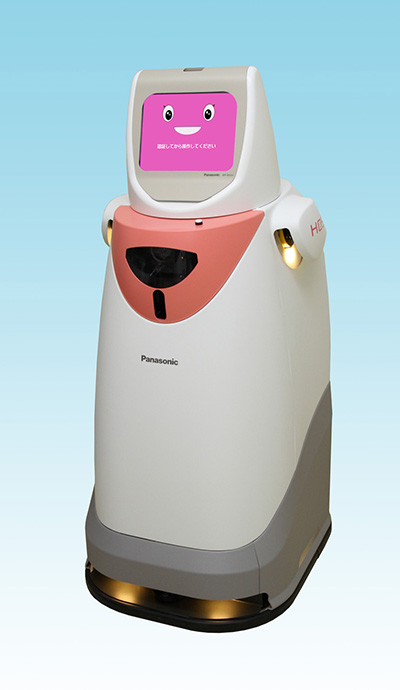Panasonic unveils next-gen ‘clever’ robots
PANASONIC has unveiled a new generation of robots, many aimed at manufacturers, including one which can be directly taught skills by master mechanics.
Panasonic took part in one of the world’s largest robot exhibitions, the International Robot Exhibition 2015, staged on December 2-5 at Tokyo Big Sight.
Panasonic exhibited robotics solutions covering a wide range of industries, including diverse manufacturing capabilities, as well as farming and tourism. 
Panasonic’s tomato-picking robot was on display as well as the communication robot, HOSPI-Rimo, and the parallel link robot which can be ‘directly taught’ skills by mechanics and technicians.
Of prime interest for manufacturers was Panasonic’s autonomous delivery robot, HOSPI. The robot delivers items to destinations without the need for electromagnetic tapes and other signalling devices. HOSPI autonomously plans its route based on the map of the facilities and location of the corridors, and it can even use elevators to change floors.
When passing by other people, the robot will slow down and, if there is enough space, it can automatically manoeuvre around for both safety and efficiency. HOSPI is likely to be adopted by hospitals in particular to deliver pharmaceuticals and specimens, allowing hospital staff to focus on their tasks, improve service provided to patients, and reduce risks that arise when they leave patients’ bedsides.
A version of HOSPI is also currently under development as a ‘communications’ robot.Panasonic has foundHOSPI-Rimo is drawing already attention as a potential guide robot at train stations, airports and showrooms. Like HOSPI, it can autonomously get to the destination, and it can also distinguish individuals, by utilising facial recognition, and communicate interactively using its high definition display.
Manufacturers expressed interest in Panasonic’s ‘parallel link robot’ which can be directly taught movements and skills of a master mechanic. It quantifies the know-how gathered and reproduces it faithfully. It can also respond quickly and delicately, a Panasonic spokesman said.
The as yet unnamed parallel link robot “can automatically perform a wide range of manufacturing processes such as inserting parts to electronic substrates, applying adhesives, and assembling parts, supporting a high quality, yet affordable, innovative manufacturing,” according to the spokesman.
The agribusiness sector is watching Panasonic’s development of a tomato-picking robot.
With newly developed sensors and image processing technology, Panasonic is developing harvest robots that can accurately assess colour, shape, and location.
“This robot can even pick fruits such as tomatoes that were thought difficult to harvest with machinery without leaving a single scratch,” the Panasonic spokesman said. “And by connecting to the network, it can automatically move around the ridges and transport the tomatoes to baskets or even change baskets, so it can autonomously undertake every step of the harvesting process.”
As a back-up to its robots, Panasonic is also developing GaN/SiC power devices. High voltage, miniaturization and rapid switching power devices, made with GaN and SiC, are in the pipeline to help realise the robots’ practical potential.
The GaN and SiC devices are drawing attention as key devices that will help save energy at high currents and high voltage and also contribute to the miniaturization of equipment.
“To realise a society where people and robots work together, where people can enjoy an enriched lifestyle, Panasonic will continue to develop game-changing robotics technologies drawing on the group’s collective strengths,” the Panasonic spokesman said.
Panasonic has trademarked HOSPI, HOSPI-Remo and Direct Teaching.
ends

 How to resolve AdBlock issue?
How to resolve AdBlock issue?